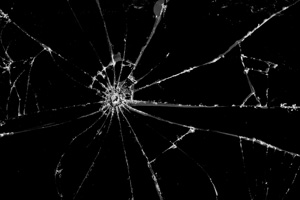Frequently Asked Questions
How is window film applied?
Our window films are professionally applied by skilled, well-trained personnel. Almost all of our films are designed to be applied to the inside of your glass. The first step is to prepare the window area for the application; placing drop cloths on the floor, protecting and/or moving furniture where necessary. Next, the window glass is cleaned using simple cleaning solutions (often water and baby shampoo!) and razor blade scrapers. Then, the film is sprayed with a slip solution (detergent and water) for proper positioning, and applied to the window glass. Using a professional grade squeegee and following proper techniques, the application is completed by removing excess water, trimming the edges, and a final squeegee technique to dry the edges.
Does the ultraviolet protection lose its effectiveness over time?
No, the ultra violet (UV) protection that we use in our proprietary adhesive system is indefinite. It does not lose its effectiveness over time. In fact, we tested an actual glass sample from The Dumbarton House in Washington,DC. This was a ten (10) year old application and the ultra violet transmission still measures less than one percent!
How do safety and security window films work?
Compared to 3M Scotchtint films, 3M Scotchshield window films are made with thicker polyester and a much thicker, more aggressive adhesive. 3M Scotchshield films are unique in the industry. They are built using a special micro-layered polyester technology which increases the films’ tear resistance significantly. Pound for pound, the impact and tear resistance of Scotchshield safety films out perform all other films of similar thickness.
How do Scotchtint window films work?
Scotchtint sun control films are designed to reduce the amount of solar heat transmission through window glass by increasing the solar heat reflection (not necessarily visible reflection) and solar heat absorption of the glass.
Typical colored or dyed films work primarily through increased absorption. The color absorbs the solar energy at the glass, thus reducing the direct transmission into the room. These films only offer marginal performance when compared to reflective films.
Reflective films are films that have been precision coated with metals. These metallic films are designed to increase the solar energy reflection of the glass and some of the absorption. Scotchtint reflective films range from moderate to excellent in solar performance (heat gain reduction).
All Scotchtint sun control films are protected with our patented abrasion resistant coating for long term durability and maintained appearance.
What is the typical energy pay back for Scotchtint window films?
Simple paybacks will vary depending upon the amount of sunlit glass exposure, the type of film, the type of glass, cost of fuel, cost of application, and other variables. However, we have seen paybacks often range in the 2-5 year period, with some reported to be even less than 6 months. See your 3M Authorized Window Film dealer to analyze the potential energy savings in your commercial property.
How do I clean my Scotchtint window film?
After thirty days, you may clean Scotchtint films using normal household cleaning solutions, including ammonia based products, e.g. Windex, and a soft, lint-free cloth or towel. You may also use a squeegee to clean the film. Abrasive products which could scratch or damage the film should not be used.
How long does it take for 3M™Scotchtint window films to dry?
We suggest allowing thirty days for the film to fully dry and cure. During this curing process, it is normal to have small water bubbles and/or a hazy appearance. These will disappear as the film dries; depending upon the film type and weather conditions, drying may take as much as 30 (or even 45) days, or as little as a few days. Once dried, 3MScotchtint films will look great and perform for many years to come.
How long does Scotchtint window film last?
Scotchtint window films are made to last for many years; just how long may depend upon the type of film applied, type of glass it is applied to, and the particular climate in which it is applied. 3M offers lifetime warranties for residential applications. For commerical applications, the warranty period is up to 15 years. Most exterior applications are warrantied for a 7 year period. Case studies show the films far outlasting the warranty period and continue to maintain all solar properties and performance.
Will 3M Scotchtint window film stop my furnishings from fading?
There are six factors affecting fabric fading:
- Ultraviolet Light
- Visible Light
- Heat and Humidity
- Chemical Vapors (including ozone)
- Age of Fabric
- Dye Fastness
As a general rule of thumb, ultra violet (UV) is approximately 40% of the cause, visible light is about 25%, and heat about 25%. The remaining 10% can be attributed to humidity, pollutants, interior lights, dye stability, and more.
SO, while nothing completely stops fading, 3M Scotchtint films are designed to help reduce the major causes of fading (ultra violet light, visible light, and solar heat), thus prolonging the life of your furnishings, perhaps as much as two to five times.
What is the warranty for 3M Scotchtint window film?
3M Scotchtint window films are warranted to maintain their solar properties without bubbling, blistering, peeling, cracking, or crazing. All of our films are also warranted against discoloration. Should the product prove to be defective, 3M and the Authorized 3M Dealer will replace the film and provide the reapplication labor free of charge.
Optional Platinum Warranty – Residential Applications Only
The 3M Platinum Warranty matches the terms and conditions of the residential customer’s existing window manufacturer’s warranty. This allows the customer continuous coverage on new windows and the peace of mind having assurance that a product from 3M is protecting their investment.
Do 3M Scotchtint window films cause seal failure when applied to insulated (double-pane, Thermopane) windows?
No, 3M Scotchtint window films do not cause seal failure. We’ve been applying 3M Scotchtint films to insulated windows for nearly 50 years with several millions of square feet of film applied to date.
When recommended films are applied to the inside pane of an insulated glass unit, there will be some absorption of the sun’s energy, which will increase the temperature of the glass pane. Some of this heat will transmit to the airspace, slightly raising the airspace temperature. However, even a 20 F degree increase (unusual for most films) will result in a less than 3% change in air pressure, whereas properly made units are designed and tested to withstand 22% changes in air pressure.
Risk of seal failure is greatly determined by the quality of workmanship and the quality of the materials that go into building the insulated glass units. The best guard against seal failure is to purchase well-made units from reputable window manufacturers that have solid experience and histories with insulated units.
Optional 3M Platinum Warranty matches the terms and conditions of your existing window warranty.
Will 3M Scotchshield safety film keep my glass from breaking?
This is difficult to answer with any degree of certainty because it is difficult to test for this. Window glass varies in strength from piece to piece, and lot to lot. So, if a 3M Scotchshield protected window were impacted, yet, failed to break, it would be difficult to determine if the glass alone, the film alone, or the film and glass together resisted the breakage.
Who makes Scotchtint and Scotchshield window films?
No one has more experience with window film than 3M. In fact, not only did 3M receive the very first patent on window film in 1966, but today we’re still the only manufacturer that produces our own raw materials such as polyesters, adhesives, metals and scratch-resistant coatings. This gives us the quality control and product consistency other manufacturers just can’t match.
What’s more, we have a core of carefully screened authorized dealers who are trained by 3M to professionally install your 3M window film correctly. 3M window film is backed by a warranty that covers 100% of materials and labor.* It’s the most comprehensive warranty you can get.
That, along with 3M’s worldwide reputation as adhesive experts, means you can rest assured knowing 3M window film is safe for your windows, and safe for you.
Can you apply window film to tinted / Low-E glass?
Whether window film should be used on low E windows and how much you will benefit depends on three factors:
- Type of low E surface used on glass.
- Location of low E surface in the window system.
- The desired amount of heat gain reduction, heat loss reduction, or other film benefits.
- Lower heating and cooling operating costs
- Lower utility demand costs
- Utility rebates
- Improved tenant comfort
- Improved aesthetics, uniform appearance
- Improved safety and security
- Extended A/C equipment life
- Valued alternative to adding more A/C equipment
- Thermal Stress–from absorption of solar radiation.
- Tensile Stress–from the weight of the glass itself.
- Mechanical Flexing Stress–from wind.
- Impact Stress–from flying objects, hail, baseballs.
- Twisting Stress–from building or window frame sagging or settling.
There are two basic types of low E surfaces on glass. One of these is a conductive coating put on glass as it is being made. It gives some heat loss reduction, but does little to reduce heat gain into a building. The second type is a more complex system of multiple layers of metals and conductive coatings deposited on glass after it has been made. This type of low E glass gives heat reductions of 30% to 50% in addition to reducing heat loss. Obviously there will be more heat gain reduction using film on the first type. If there is any question about the type you may have, ask your glass company or the window manufacturer to send you the specific information about your glass.
The location of the low E surface in your window system is also very important in deciding whether film should be used. If the low E coating is on the room-side surface of the innermost pane of glass, the use of window film may reduce or eliminate the heat loss reduction of the glass itself. This may be more than offset by the heat gain reduction/heat loss reduction properties of the films to be used. Most low E window systems, however, consist of double pane windows where the low E surface faces the air space between the panes. In this case, film can be installed without eliminating the heat loss reduction benefit of the low E glass. The type of window film you choose for low E glass depends entirely on your desired benefit -whether you want to reduce heat gain, control glare, prevent heat loss, reduce fading or enhance the safety of your windows and glass doors. We will help you carefully consider all these benefits before making a final decision.
Do you install window film on the inside or outside of a building?
Most of our applications are installed on the interior surface of the windows but exterior applications are available.
Why do commercial customers have 3M Scotchtint film applied to their buildings?
Can I install 3M Scotchtint window film myself?
No. 3M Scotchtint window films require professional application. Our authorized 3M window film dealers are thoroughly trained and experienced in performing high quality work. In this way, our customers will enjoy the benefits of 3M Scotchtint window films and have the comfort of the 3M warranty.
Do 3M Scotchtint window films cause glass to break?
Glass breaks when stressed. There are five types of stress which may cause glass breakage:
The first type, thermal stress, is the only one which film may affect. The use of window films will increase the thermal stress on sunlit glass. However, there are also other factors which will increase thermal stress such as: partial shading of windows from overhangs, tightly fitting drapes or blinds, signs or decals on windows, heating and cooling vents directed at glass. In addition, different types of glass (annealed versus tempered, clear versus tinted) have different solar absorption rates and will withstand different degrees of thermal stress.
3M’s forty five years of experience with applying 3M Scotchtint window films to different types of glass enables us to make proper film/glass recommendations and minimize the potential for glass breakage. In addition, we support these recommendations with our 60-month glass breakage warranty against thermal shock fracture. Should the glass break within 60-months of application, 3M; will replace the glass (maximum $500.00 with a $25.00 consumer deductible, or 5% of replacement cost, whichever is greater per claim), and the dealer will replace the film.
Are 3M Scotchshield safety films hurricane-proof? Bullet-proof? Burglar-proof?
No. 3M Scotchshield safety films are not hurricane-proof, earthquake-proof, bullet-proof, bomb-proof, nor burglar-proof. Again, they are designed to make the window glass more shatter-resistant.
In the event of a windstorm, these films may have significant safety and security value. They can reduce the risk of injury from flying shards of broken glass, and possibly help prevent debris and water penetration through the window depending on the severity of the storm (and the type of glass, framing system, size and velocity of objects, etc).
In an earthquake, these films can reduce the risk of serious injury from flying shards of broken glass, and possibly prevent glass from falling out of a home or building. Again, much may depend upon the severity of the quake (and the type of glass, framing system, and other factors).
3M Scotchshield safety films are a low profile, high performance measure of security in the battle against ‘smash and grab’ crime. The tough, shatter-resistant qualities of the film can hold the window glass together even if a brick (or similar object) were actually to pass through the glass. The thief must now make a choice; continue to attack this window, try another window, or move on. Time is short, and often they move on. However, if they are determined to gain entry, they will get in. It is generally recommended that the property have proper alarm systems in addition to Scotchshield safety window film.
Will Window Film kill my house plants?
In most cases if a house plant is already receiving adequate light the use of window film will not harm it. New growth or flowering may be retarded, and, for a few days, a plant may go into a state of shock while it adjusts to the light change. If a particular plant normally wilts by the end of a sunny day, it will actually thrive better with film installed. Although there are some obvious guidelines in determining what, if any, effect window film will have on a plant (for instance, dark green plants need less light than lighter colored ones), there is one sample test which can be done prior to film installation: merely move the plant to an area with less sunlight for a few days. In addition, most nurseries or local agriculture agencies can advise you whether a particular plant needs closer to maximal or minimal light.













